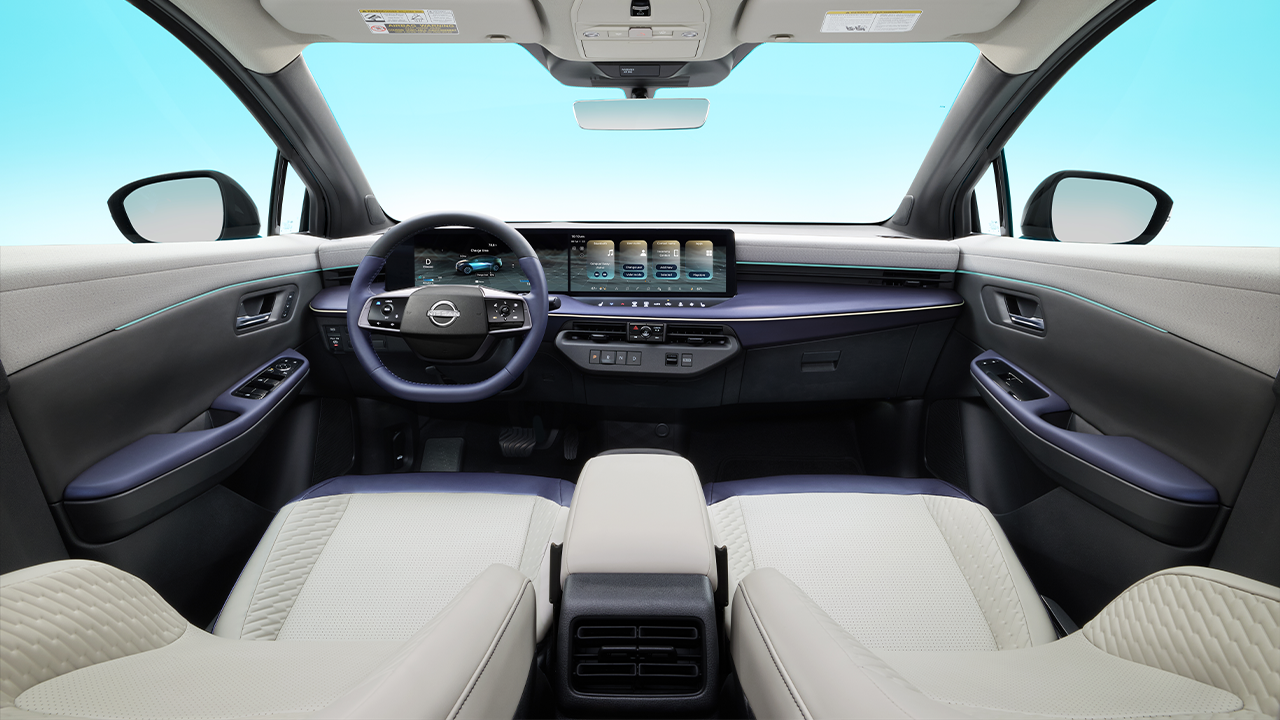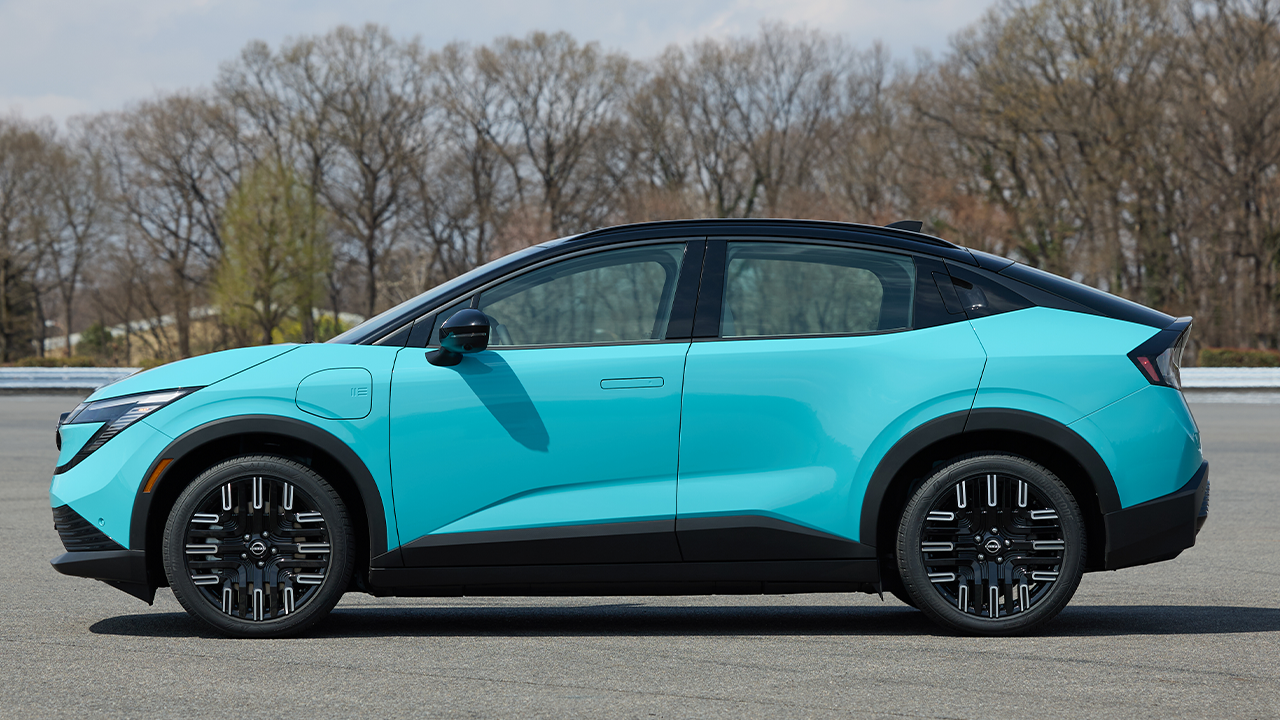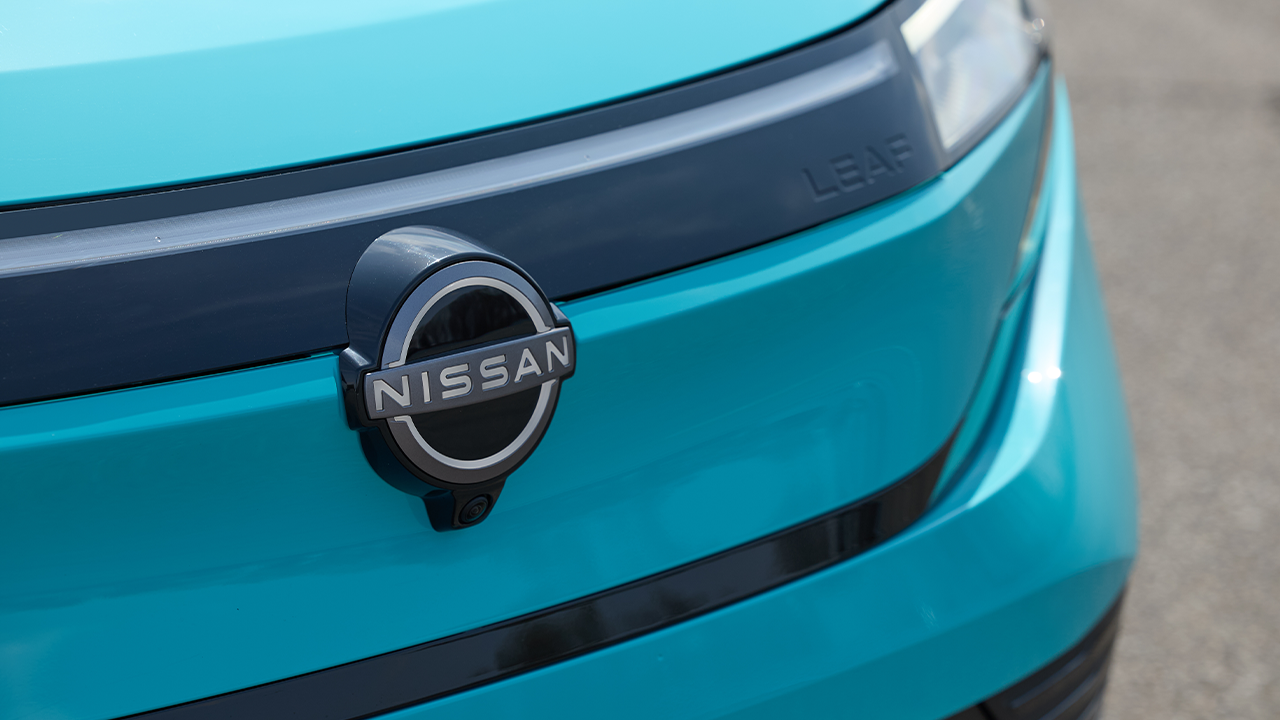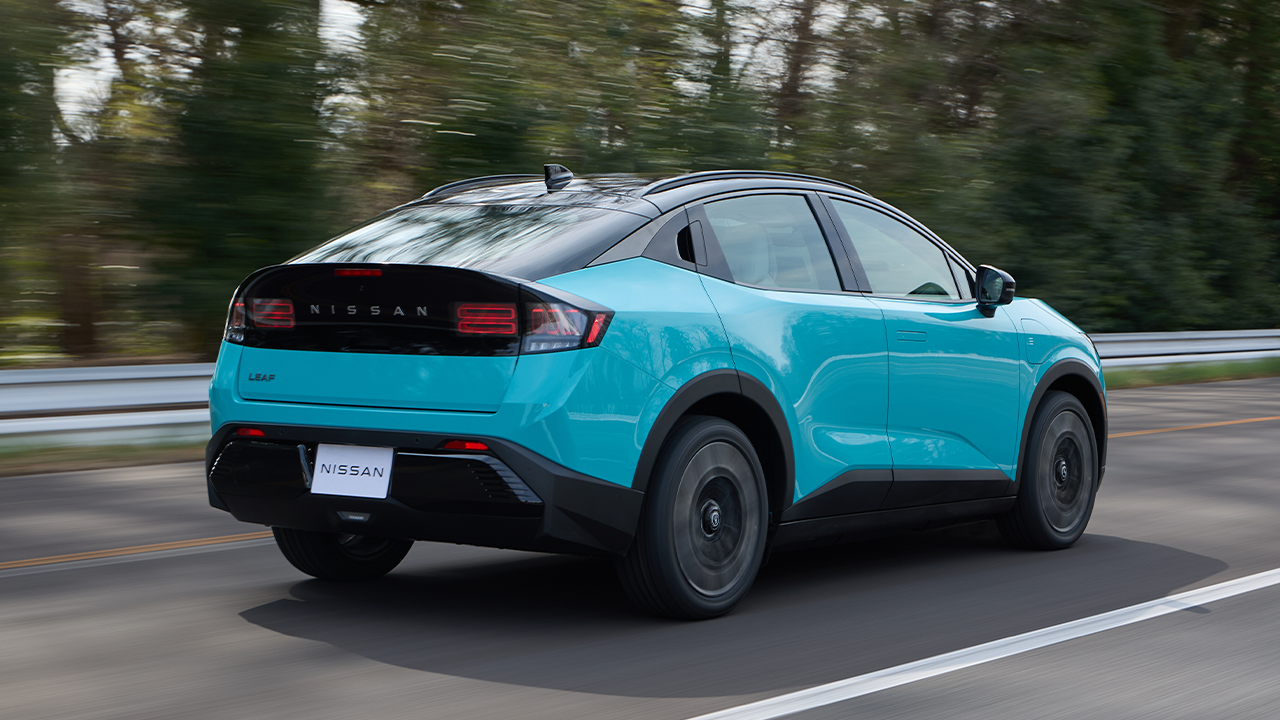-
Car Reviews
- Car News
-
Car Comparisons
Latest comparisons
- Chasing Deals
Small EV, big battery: Nissan’s new Leaf finally revealed with fresh tech, but will it be good enough to beat China and Korea?
Nissan has unveiled a long-awaited new generation Leaf, ditching its current hatchback design for a small SUV body, and gaining a large 75kWh battery which promises up to 570km of range.
The new Leaf has come a long way from its second gen predecessor, scoring fresh looks and technology ahead of its scheduled arrival in Australia between April 2026 and March 2027.
The Oz-market Leaf is likely to launch with a choice of 52kWh or 72kWh battery alongside a single, front-mounted electric motor. Like the new Nissan Ariya, the Leaf is built on the CMF-EV platform shared with Renault.
Charging the Nissan Leaf now makes use of a high-speed compatible CCS charger inlet, doing away with the outgoing CHAdeMO fitting. Expect a rapid 150kW DC charge from 10-80% in approximately 35 minutes.
The third-generation Nissan Leaf is exclusively front wheel drive. The 52kWh battery outputs 130kW and 345Nm, while the 72kWh battery delivers 160kW and 355Nm. Both batteries are lithium-ion units, with liquid cooling and thermal conditioning.
Inside the third-generation Leaf is a large 14.3-inch digital dashboard, sitting flush against a 14.3-inch infotainment touchscreen. Below the multimedia screen is a dedicated digital climate control panel, and push-button gear selector.
Nissan claims the interior floor is ‘almost’ flat, thanks to efficient packaging of the drivetrain and battery. Select trim grades will also benefit from a Bose sound system with speakers integrated into the front headrests.
The new Leaf is similar in most dimensions to the outgoing model, though is a little shorter at just over 4.4 metres tip to tail.
The third-generation Nissan Leaf’s design is contemporary, with crisp LED lighting and flush fit door handles. A dimming panoramic roof is fitted as standard; it is heat insulated, and can transition from transparent to opaque at the touch of a button.
Nissan claims the new Leaf will have a drag coefficient of 0.25 Cd, credited to ‘aero-tuned’ 19-inch wheels and a flat underbody. This is a 0.03Cd improvement over the outgoing Nissan Leaf (0.28Cd), but is still shy of the Tesla Model 3’s impressive 0.219 Cd posting.
The two battery choices aren’t just intended for driving. Confirmed for the US market is ‘Vehicle-to-Load’ (V2L) capability, meaning small to medium appliances can access two 1500W outlets mounted in the cabin and boot.
Meanwhile, in the European market, the Leaf gains ‘Vehicle-to-Grid’, or V2G, allowing for owners to send stored, unrequired energy back into the power grid.
Nissan has confirmed its best feature – ‘Vehicle-to-Home’ (V2H) – for the Japanese market. It allows owners to send power to their home by use of the Leaf’s battery – ideal in a blackout.
Those with solar panels will also benefit from V2H, which is optimised for charging the vehicle during the day.
This could be one feature coming to Australia. V2G is currently offered by the outgoing generation of Leaf alongside the current Mitsubishi Outlander PHEV and has been trialled around the country.
The Australian Renewable Energy Agency has also released a roadmap detailing current and future locations for bi-directional charging. It’s likely V2H will play an important role for Australian households in the future.
A Nissan Australia spokesperson said further details on V2X tech will be provided closer to the start of sales in local markets.
Nissan has yet to announce Leaf pricing, but this will be another crucial element in the new EV’s success with names like the BYD Atto 3, MG S5 and Kia EV3 all beating the Japanese brand’s EV to market significantly, with pricing starting in the mid-$40K region.
Latest news
About Chasing cars
Chasing Cars reviews are 100% independent.
Because we are powered by Budget Direct Insurance, we don’t receive advertising or sales revenue from car manufacturers.
We’re truly independent – giving you Australia’s best car reviews.




